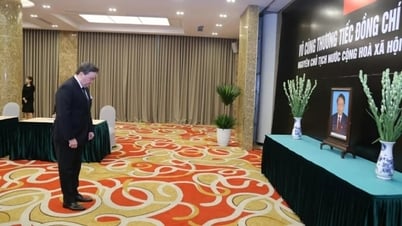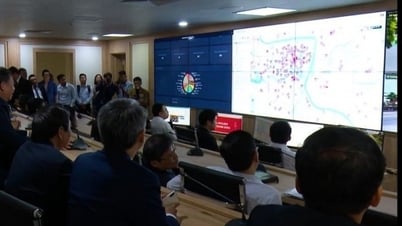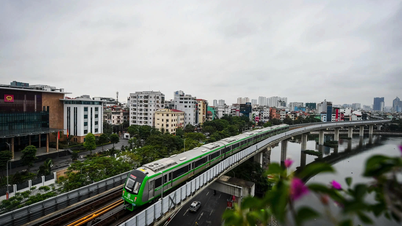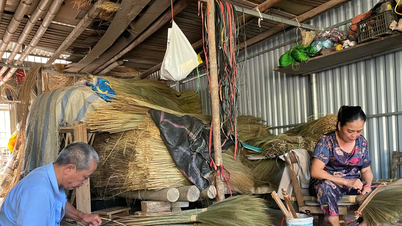Diversified conglomerates in Southeast Asia have been losing ground over the past decade, according to the recently released “Pathways to Success for Southeast Asian Conglomerates” report by EY-Parthenon, which studied 262 publicly listed corporations globally, including 36 in Southeast Asia.
Specifically, Southeast Asian conglomerates have outperformed their global peers by a wide margin, with total shareholder returns (TSR) reaching 34%, 20% higher than their global counterparts during the 2002-2011 period.
However, the TSR of diversified conglomerates in the region has fallen to 14% over the past decade, and is now only 3% higher than that of global diversified conglomerates.
“The TSR gap is a clear indicator of corporate underperformance. A deeper look at these conglomerates reveals that some conglomerates consistently outperform others. Therefore, there is still a lot of room for Southeast Asian conglomerates to understand their strengths and improve their performance,” said Sriram Changali, EY ASEAN Client Value Creation Services Leader.
Stagnant portfolio
According to the EY-Parthenon report, the high profitability of Southeast Asian conglomerates is due to the region's inherent advantages in the early 2000s, when they had easy access to capital, close ties with government agencies, and access to strong growth sectors such as real estate, commodity trading and industries such as energy.
However, these sectors have seen declining profits in recent times. In addition, these corporations have not expanded their investment focus to other sectors, leading to declining business performance.
Southeast Asian conglomerates are less enthusiastic about emerging sectors such as healthcare or technology, media and telecommunications (TMT), which have generated very high returns over the past decade, the report said.
“Southeast Asian corporations remain quite ‘loyal’ to the sectors they are familiar with. As a result, their industry revenue contribution has remained fairly stable since 2003,” said Andre Toh, EY ASEAN Valuation, Business Model and Economics Services Leader.

Mr. Andre Toh, EY ASEAN Valuation, Business Model and Economics Services Leader. Photo: EY
Not only are they losing their edge over global counterparts, Southeast Asian conglomerates are also facing increasingly fierce competition from specialized businesses and startups with disruptive business models.
Over the past decade, niche companies have outperformed large conglomerates in both traditional and emerging sectors. They have even outperformed Southeast Asian conglomerates, with TSRs as high as 37% higher in some sectors.
Southeast Asian conglomerates should be more proactive in identifying and investing in emerging sectors and markets, which will help them future-proof their portfolios and remove losses from their balance sheets, said Andre Toh.
“Once they are aware of their characteristics, these corporations can regain their dominance in the coming century with a suitable value creation approach,” Mr Toh said optimistically.
Key to success
EY-Parthenon research suggests four strategic pillars that Southeast Asian corporations can focus on to achieve success.
First, build a flexible capital allocation strategy to future-proof their portfolio and increase exposure to higher growth sectors such as technology and healthcare, while balancing exposure to low-yield, low-risk, capital-heavy sectors.
By developing and implementing a flexible capital allocation strategy, diversified conglomerates in Southeast Asia can supplement their resources to overcome the inertia of declining growth and adapt to changes in a volatile business environment.
Second, build a digital ecosystem to drive productivity and new revenue streams.
A digital ecosystem is formed through the combination of platforms and strategic partnerships. At the same time, it also creates a network of businesses that facilitate and encourage the sharing of data, applications, technology infrastructure, etc.
Corporations can create such an ecosystem within their existing businesses, thereby becoming orchestrators of that ecosystem. They can then have greater control over the dynamics of the ecosystem and bring in greater revenue and profits.
Third, build a sustainable value creation mindset by integrating sustainability as a long-term group strategy embedded in each of the group's business activities.
Vingroup, Vietnam's largest conglomerate, has pioneered environmental, social and governance (ESG) initiatives that have proven beneficial through the group's above-average financial performance.

VinFast electric car, an environmental solution of VinGroup, the largest multi-industry corporation in Vietnam. Photo: Reuters
To integrate sustainability into its long-term strategy, Vingroup has developed a Sustainable Finance Framework, under which the group issues sustainable financial instruments and allocates the proceeds to finance sustainable projects. It has also developed ESG standards in key areas such as clean transportation, sustainable water management and healthcare delivery.
The final strategy that EY-Parthenon suggests is that Southeast Asian conglomerates should move towards asset-light business models and shift to third-party capital deployment.
Leading real estate groups in Southeast Asia have recently adopted an asset-light strategy to enhance market perception by shifting from being conglomerates with huge balance sheets to becoming asset managers with improved earnings quality and stable cash flows.
In short, by developing flexible capital allocation strategies, building digital ecosystems, and creating a mindset to drive sustainable long-term value, Southeast Asian corporations will achieve superior value, and ultimately regain dominance in the global market .
Source






![[Photo] Pink ball and table tennis](https://vphoto.vietnam.vn/thumb/1200x675/vietnam/resource/IMAGE/2025/5/26/d9f770bdfda243eca9806ea3d42ab69b)


















![[Photo] French President Emmanuel Macron and his wife begin state visit to Vietnam](https://vphoto.vietnam.vn/thumb/1200x675/vietnam/resource/IMAGE/2025/5/25/03b59c7613144a35ba0f241ded642a59)
![[Photo] Ea Yieng commune settlement project abandoned](https://vphoto.vietnam.vn/thumb/1200x675/vietnam/resource/IMAGE/2025/5/25/57a8177361c24ee9885b5de1b9990b0e)

































![[Infographic] Vietnam-France Comprehensive Strategic Partnership](https://vphoto.vietnam.vn/thumb/402x226/vietnam/resource/IMAGE/2025/5/26/986f63068ea9413dbbb558ee6c6944f3)


































Comment (0)